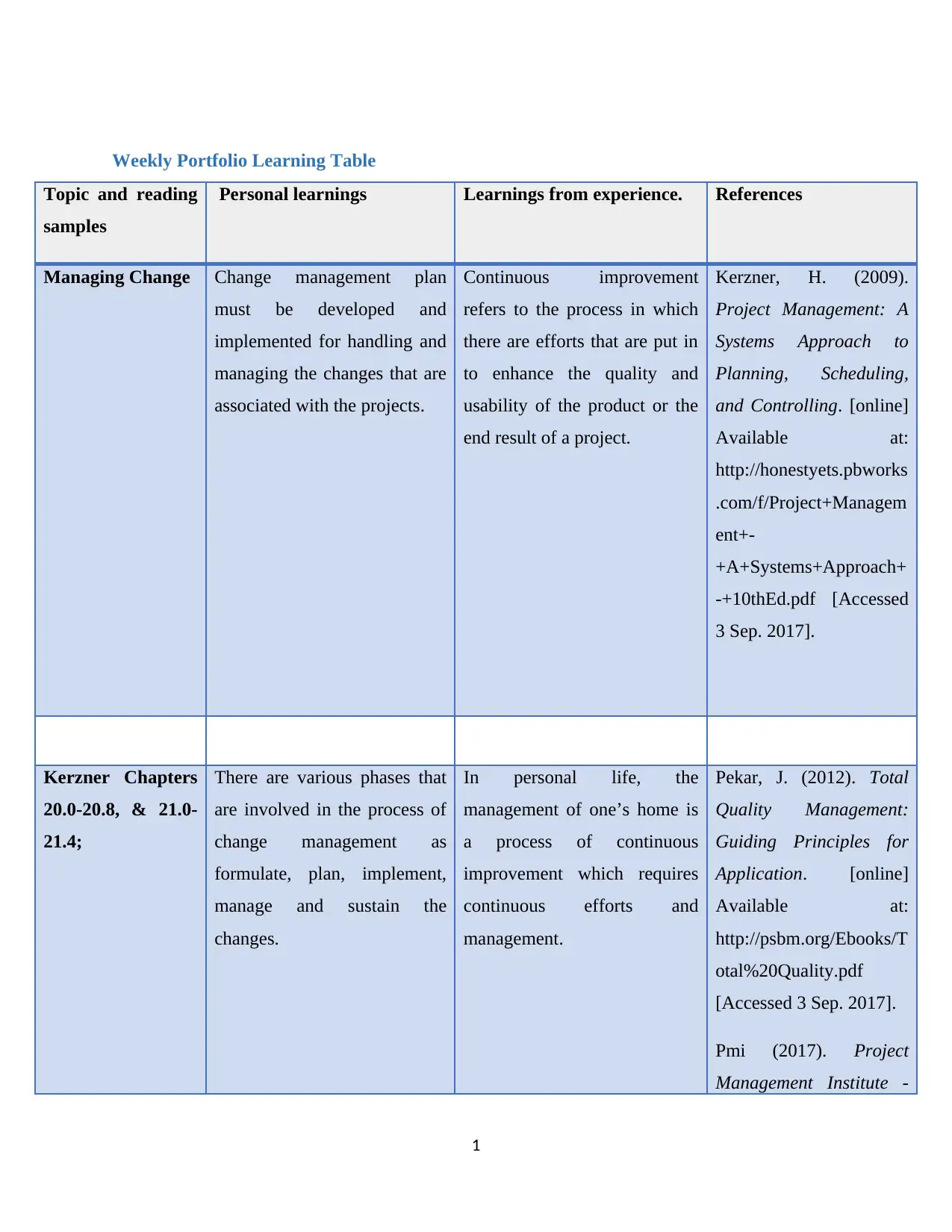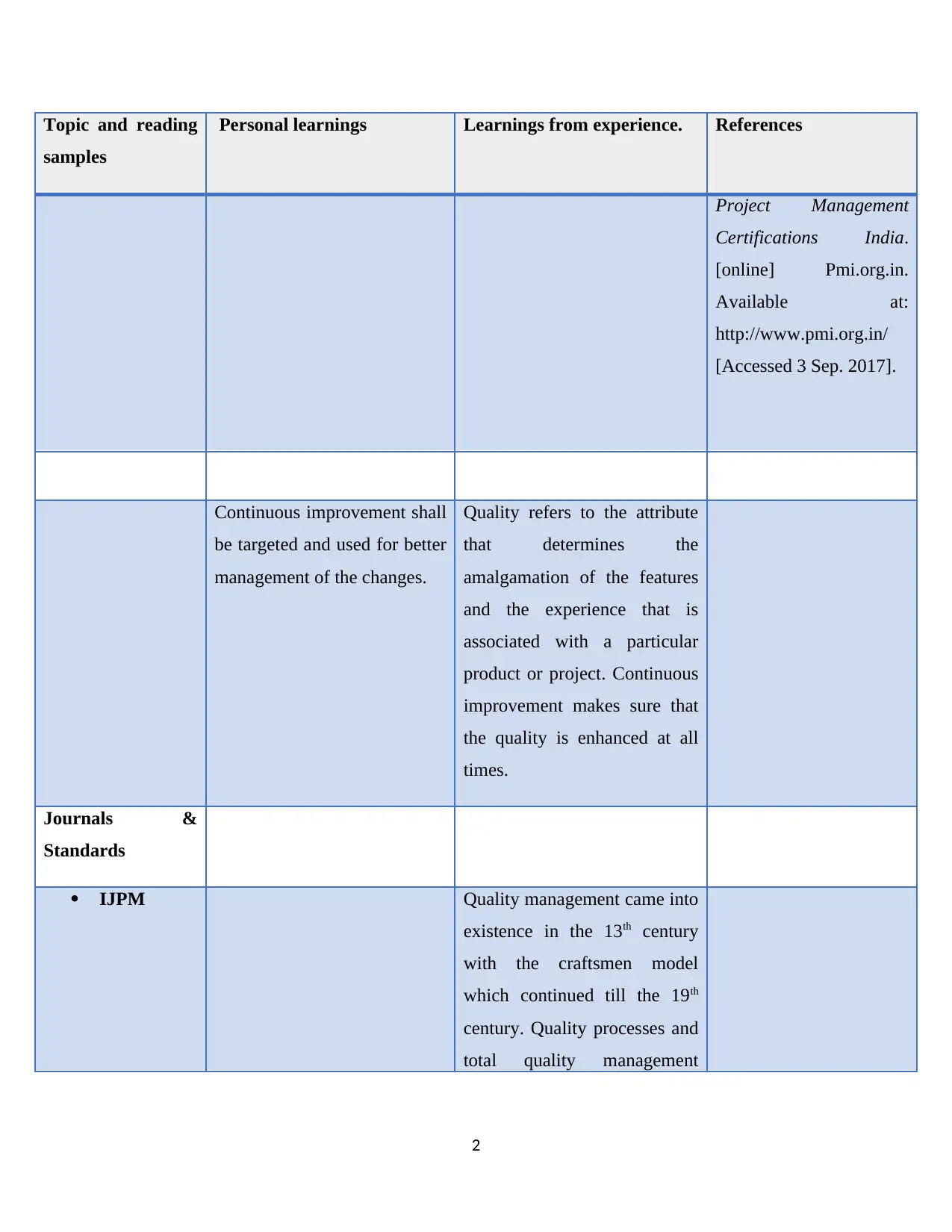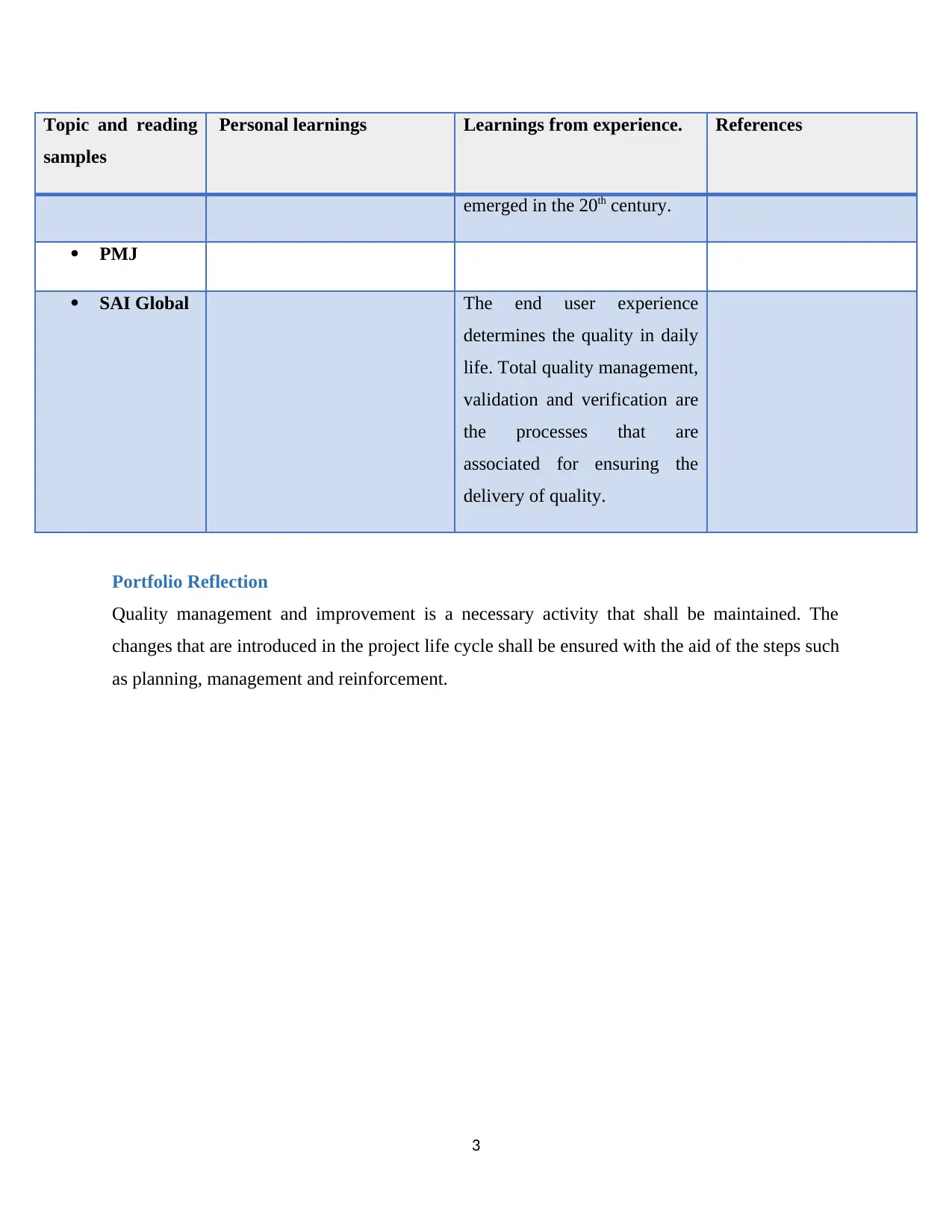Change Management and Quality Improvement Report: Project Analysis
VerifiedAdded on 2020/03/04
|3
|396
|54
Report
AI Summary
This report examines the critical aspects of change management and quality improvement within the context of project management. It covers essential topics such as continuous improvement, total quality management, and the project lifecycle. The report discusses the importance of change management, detailing the phases involved in implementing changes and highlighting the need for continuous efforts to enhance quality and usability. It references key sources like Kerzner and Pekar, providing insights into project management methodologies and quality assurance. The report also touches upon the historical evolution of quality management and the role of end-user experience in determining quality. The focus is on the application of change management strategies and the integration of quality improvement processes to ensure successful project outcomes. This report emphasizes the importance of planning, management, and reinforcement in managing changes within a project's life cycle, and it reflects on the practical applications of these concepts.
1 out of 3










![[object Object]](/_next/static/media/star-bottom.7253800d.svg)